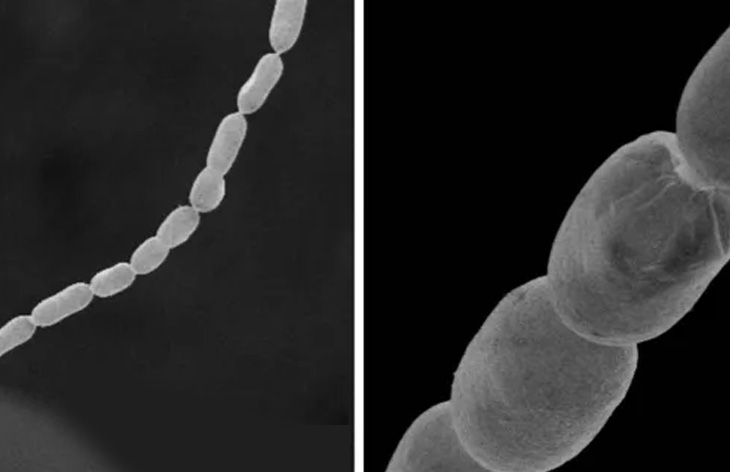Recently scientists have discovered a new species of bacteria. The bacteria of this species is being called the largest bacteria ever. The cell of this one-celled bacteria is so large that it can be compared to the eyelids of a human being one centimeter long. This bacteria is about 5,000 times larger than normal bacteria.
Jean-Marie Volland, the author of the research and marine biologist at Lawrence Berkeley National Laboratory, says that it was really surprising to find such a large bacteria. According to a new research published in the journal Science, this bacteria named Thiomargarita magnifica was first discovered by Olivier Gros, Professor of Marine Biology at Université des Antilles in Guadeloupe. They found this bacteria when they were trapped in a Caribbean mangrove swamp.
Due to its large size, it was previously considered a eukaryote. These are a type of cells from which animals and plants are made. But when it was viewed under a microscope, it was found that it had nothing like a eukaryotic cell, the nucleus and mitochondria were clearly visible. On further study, it was found that it was a bacterium.
Most bacterial cells are very microscopic, that is, their length is about two micrometers. Some large bacteria can be a few hundred micrometres. But the length of this new species of bacteria is 20,000 micrometers, that is, it is two centimeters long.
These bacteria are also hard like nails. They breed in an unusual way. The filament contracts and separates to form the bud containing the DNA. This bud separates after that. Despite their intimidating size, there is no danger to humans from them. The scientists also discovered the genomic structure of the T. magnifica bacteria. DNA analysis showed that it had three times more genes than most bacteria.

![Buddha Purnima 2025 [TKB INDIA]](https://topknowledgebox.com/iphaphoo/2025/05/12052025-150x150.jpg)
![YouTube is about to turn 20, the company announced many big features [TKB Tech]](https://topknowledgebox.com/iphaphoo/2025/04/28042025-150x150.jpg)
![Basant Panchami 2025: Know the correct date and auspicious time [TKB INDIA]](https://topknowledgebox.com/iphaphoo/2025/01/31012025-150x150.jpg)

![Amazing feature of WhatsApp, you will be able to reply without listening to the voice message[TKB Tech]](https://topknowledgebox.com/iphaphoo/2024/11/24112024-150x150.jpg)





More Stories
The color of rivers in Alaska turned orange, scientists are surprised by this unknown change [TKB Science]
Asia’s largest liquid mirror telescope installed in Nainital, will reveal the secrets of space [TKB Science]
Powerful earthquake in New Zealand, intensity was 7.0 on Richter scale [TKB Science]